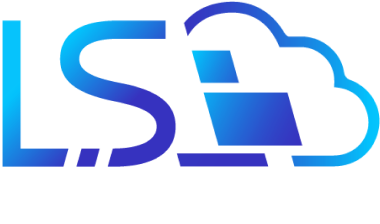
In the race to achieve high KPI and boost consumption, agencies and providers often overlook their initial goals and objectives. This becomes problematic when we disregard our main purpose to meet the demands of end-users.
Have you ever felt that a product you’ve been working on with your team will never be released? After each meeting with the clients’ representatives, more issues arise regarding improved or increased functionality, thus increasing the workload. As a result, start-up funding goes over-budget and deadlines increase. This is the definition of “scope creep”.
Research
Conducted more than ten years ago, research from Lamri revealed that 71% of projects exceeded estimated budgets or required adjustment to the project’s original scope. Even after numerous changes to the project management strategy, scope creep continued to create problems and obstacles for businesses.

The PMI research also showed that around 44% of projects dealt with scope creep in 2015. This problem also occurred with fixed-budget projects, where deadlines and budgets were set at the beginning of the project.
Scope creep is generally considered to be an issue primarily for developers’ departments. However, it eventually creates problems for customers as well. Exceeded budgets, missed deadlines and delays entering the market can wreak havoc on a business’s bottom line.
Imagine delaying a product release for several months in a competitive market such as smartphones, for example. During that time, competitors will not only have ample opportunity to market and promote their own devices, but they will also have the ability to improve their product design and features.
Scope Creep & Corporate Software
Meanwhile, your company is still trying to release its product. The problem may increase in the case of products purchased every few years, such as corporate information software systems.
What about software for internal corporate usage and the effect of scope creep on the company? This is even more problematic, as scope creep can significantly delay a software development project, causing the organization to lose profits due to the lack of competitive software.
Why does Scope Creep Happen?
Increased workloads caused by unapproved changes or additional app development occur mainly due to the following reasons:
- Unclear project objectives
Inadequate integration of the functionality and objectives of the client’s business software, which fails to address the operational needs and requirements of the end-users
- Poor time management
Inadequate time allocated to research and planning places unnecessary stress and pressure on the team
- Rapid changes in the client’s business environment
Changes in regulations or the operations of a client’s business can significantly impact the requirements of the software
- Lack of comprehensive documentation supporting client requests
Changes cannot be implemented through verbal or email requests alone but must be accompanied by appropriate documentation
- Misunderstanding of client requirements
Different software products often share similar functionality. Team members who have already developed such functionality may become comfortable in the assumption that they only have to repeat the same work. However, this can create a situation in which differences at the beginning of a project may create more major disagreements later between the developed solution and the end-user’s requirements.
- Using inappropriate buzzwords or complicated terminology
The meaning of one word can vary greatly depending on the subject. Using such words can easily lead to confusion or misunderstandings within a project
- Undefined criteria for project management
Every client considers their requirements a priority without detailed analysis and the effect on the overall project schedule
- Workload increases without appropriate budget increase
Unfortunately, it’s common for clients to request additional or new features without the process of initiating a new project and budget approval. Sometimes, new features are integrated which the client feels are small, easily and quickly programmed. However, uncontrolled changes can lead to scope creep and the above-mentioned results
- Client micro(mis)management
Issues are sometimes settled without discussions with developers and without notifying the team.
How can Scope Creep be Prevented?
Not every project change is a sign that workloads will increase. Modifications are often beneficial, as they can present new opportunities for the company.

For example, newly discovered issues or the need for changes may require additional releases of updated product versions or even new versions. However, this is possible only when the changes are critical.
There is no single way to deal with Scope Creep, but the following simple steps can reduce the risk:
- Choose the most appropriate type of project. To avoid potential issues with increasing workloads, do not hesitate to offer clients a trial or discovery phase before starting to actively encode. Wait for the final analysis to identify a client’s business needs in order to properly align the architecture of the future software solution.
- Focus on the business needs, not the “wow” effect. When the entire team understands the actual needs of the client, the number of unnecessary modification requests will disappear.
- Keep track of changes in the client’s business to better predict trends. An example would be new government rules for employee health care that would signal changes in hospital software. Trend monitoring reveals potential changes early enough to allow timely implementation of changes.
- Never skimp on the discovery phase. Regardless of the time involved, you will reap future benefits.
- Document initial requirements. Regardless of how these documents are presented, i.e., a formal SRS specification or simply a priority task list, you and the client must both agree that the document is the basis upon which any future request will be evaluated.
- Check and correct your estimates. It is recommended that team members follow this step to determine the scope of work and to provide a final estimated project budget.
- Streamline tasks as much as possible. This will allow you to manage work volume and analyze the impact of changes in order to ensure that all stakeholders’ needs are met.
- Prioritize your tasks. It is impossible to do everything immediately due to time constraints, resources, and budget issues.
- Work within a one-week sprint. According to Agile software development, it would be much better to work with items that can be coded and launched within one week only.
- Unite your colleagues as one team. When people work collaboratively and have open communication, they can easily discuss, address and resolve any questions or issues regarding the progress of the project. Nowadays, with developers, designers, copywriters and other specialists working remotely, it is important that companies are technologically able to maintain such collaboration. Using such management tools creates a digital workplace that encourages effective communication and task management.
Although you cannot avoid changes or issues, you can try to control them. The combination of skilled business analysts, as well as close and open collaboration with clients in one LS Intranet solution, is the best way to help your team complete the project on time and within the budget.







Leave a Comments